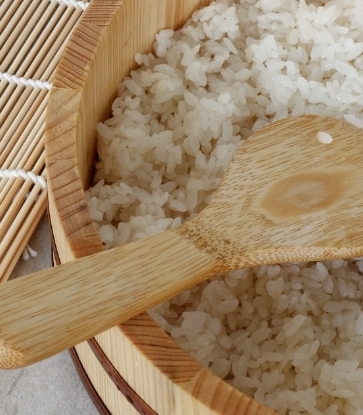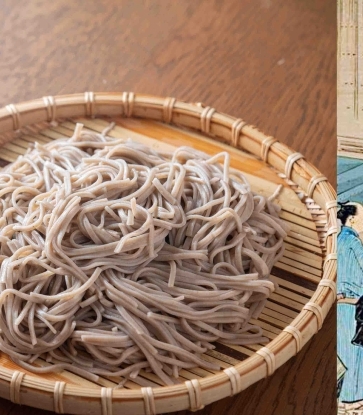"Soba is very simple. There is no artificiality to it, and the process of making it is so natural. That's what I love about soba," says Tagata.
It’s in the buckwheat
The magic of a good plate of soba noodles starts from the buckwheat. At his restaurant Teuchi Soba Tagata in Shizuoka, Japan, Tagata makes soba flour from a rare native strain of buckwheat known as oonozairai. This is produced via an ancient Japanese form of swidden agriculture known as yakihata (burned field), where forestland in mountaineous regions is cleared to create land and the wood ash is used as natural fertiliser.
He shares that not all soba is made the same – in autumn, for instance, the buckwheat harvest is better, which produces a more aromatic noodle; buckwheat from the summer harvest is turned into noodles better paired with a dipping sauce.

When a season brings about a less-than-ideal harvest, Tagata also ages the grain to bring out its flavour.
Touch of the hand
While machines have taken over many soba-making outfits, Tagata still believes, and keeps to, the art of making soba by hand. The buckwheat grains, for instance, are stone-milled by hand, and the flour kept at a constant 25°C so it will not spoil. This, Tagata shares, is an important process that makes the difference between fresh and dried soba noodles. “Aroma is very important when you eat soba, and the flour has to be very fresh to get a good aroma,” says Tagata.
The next step is to place the flour in a large basin, where pure spring water is added slowly and worked in with his hands. Strong forceful motions are applied to knead and work the doughy pellets into a dome, Tagata's practised hands quick to tell when the texture feels just right.
"When you touch the soba flour, you can feel it speak to you."
This is also why Tagata painstakingly rolls out the dough by hand each day, a process he refuses to surrender to machines. Here, the dough is rolled out using noshibo (rolling pin), then stretched and slapped on the board repeatedly until its surface gleams. “A machine only presses down on the soba dough. It doesn’t push the dough like we do with our hands,” says Tagata. Machine-rolled soba also tends to clump up the dough and cause easy breakage. "The pushing and stretching process when you roll noodles by hand gives you a lighter (airier) noodle," he says.
Flour is generously sprinkled over the stretched dough to prevent it sticking together, before it is folded twice to create layers that make it easy to cut the noodles. This is when Tagata takes out his soba kiri (a specialist soba noodle knife) and begins the rhythmic pace of slicing the dough into precise 2.1mm-strips. The noodles are then bundled up and left in a metal box until service.
A quick 7-second dip in unsalted boiling water, and the noodles are served as is with a pinch of natural salt and a bowl of dipping sauce on the side. Though many will find it rude to see someone slurping up a bowl of noodles, Tagata shares that this is common in Japan. "Slurping your noodles is actually a sign of appreciation," he says. There's also a technical aspect to this. Aerating the noodles in your mouth (when you slurp the soba) actually helps achieve the flavours and aroma of the soba when you chew it.
It's a dish that looks so simple, yet to make a good bowl of soba takes time. At Tagata's restaurant, only 70 bowls are turned out each day, as chef shares he cannot produce more.
"To understand soba, you must really love it. To me, making soba is a way of expressing myself."





















